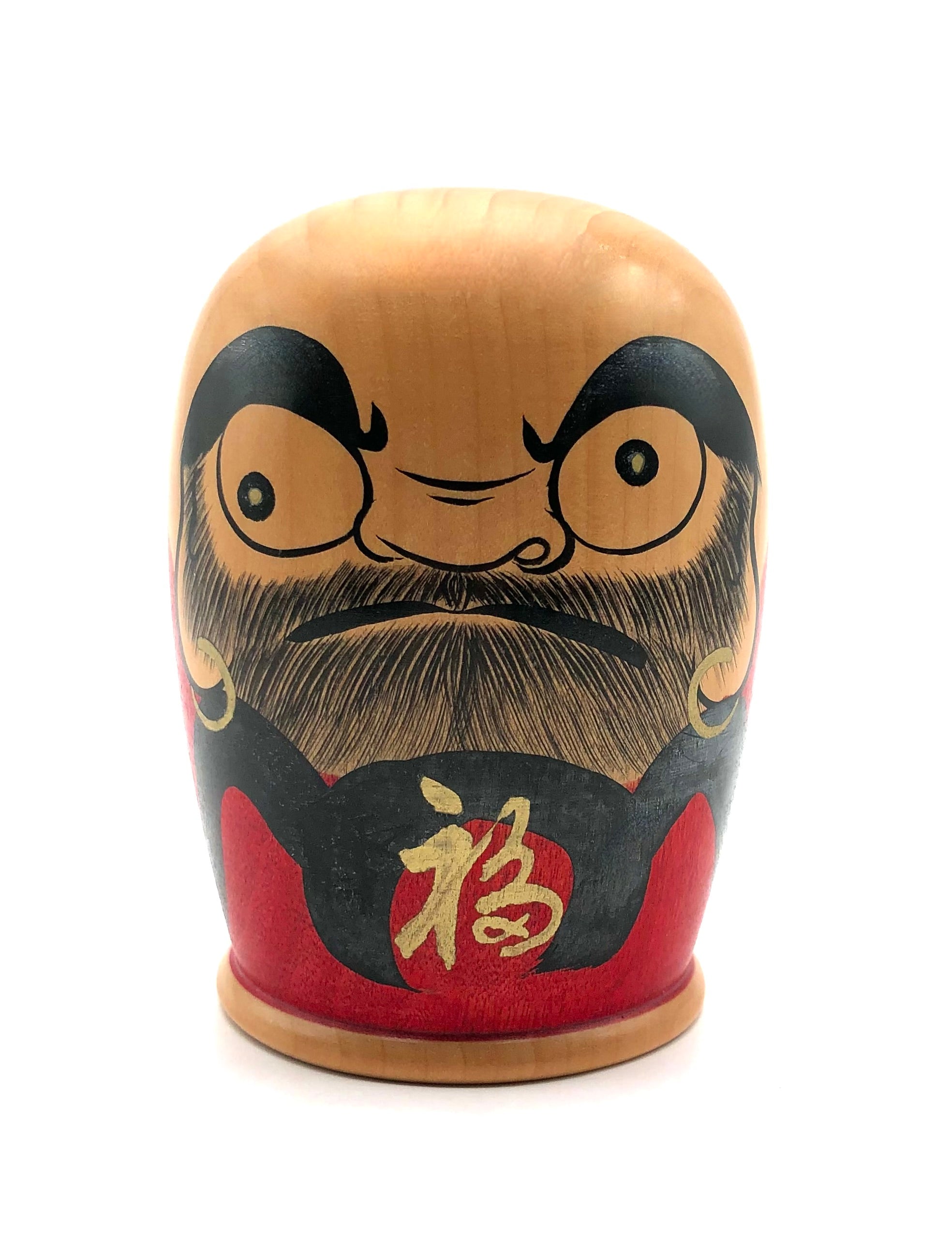

“Daruma | Bodhidharma” Wood Figure | Sony Competition Winner by Yusa Fukuju (b.1930-)
Dimensions: 5-0”h
This is a beautifully painted image of Daruma and one of ten ‘Daruma’ commissioned by the Sony Family Club in 1998.
The historical Bodhidharma was an Indian sage who lived sometime in the fifth or sixth century AD. He is the undisputed founder of Zen Buddhism, and is credited with Ch'an Buddhism introduced to China during his travels to the Middle Kingdom. (Note: Zen Buddhism is the term used in Japan, but Daruma’s philosophy arrived first in China, where it flowered and was called Chan Buddhism, recognized by the School of Mahayana Buddhism. Only centuries later does it bloom in Japan, where it is referred to as Zen). There are countless legends, some conflicting, about this sage. The best-known legends say he attained enlightenment, (Satori), after meditating in a cave for eight, (some say nine years), without blinking or moving his eyes. During those years of meditation, it is said that his arms and legs atrophied, shriveled up, and fell off.
Yusa-san uses Daruma’s red cloak to define the lower portion and back of the figure with black accents, and Daruma’s fixed eyes focused on his meditation, wide expressive nose, downturned mouth, elongated ear lobes with ear hoops, accented in gold, (which he abandoned later in life), and the characteristic crane-shaped eyebrows represented long life. When the artwork is completed, the figure is finished with a type of natural candle wax,(Rosoku no ro) with a gold ‘bring luck’ symbol in kanji on the center of the future. There is an inscription on the bottom of the doll that has Yusa-san's signature.
Condition: Excellent condition exhibiting the wonderful manipulation of wood to form the figure producing a natural and meticulous care. There are no missing elements, no scratches or imperfections related to daily use with all detailed elements intact. The object retains the original craftsmanship, meeting the standards of the collector of Shibuya, Yusa Fukuju.

Artisan
Woodworker: Yusa, Fukuju
1930-2001
Biographical History:
Yusa-san was born in Miyagi Prefecture to a prominent family of Traditional Narugo Kokeshi artists and had a difficult time separating himself from the dolls his family produced. While apprenticing under Master Takahashi Sakari of Narugo Spa, Miyagi, he began creating Sosaku dolls in the late 1950s. In breaking family tradition, he created award-winning dolls, including the Prime Minister’s Award in 1960, at 30 years of age. He is known for creating a beautifully painted image of Daruma, (Bodhidharma) on the body of his dolls in the liking of an Indian sage who lived in the fifth or sixth century AD. He was one of ten Kokeshi artists commissioned by the Sony Family Club in 1998, to submit a ‘Daruma’ winning top prize.
Beyond this overview, there is little biographical data on Yusa-san, but as researchers and collectors, we felt it was most important to represent all Sosaku Kokeshi artists, and whether or not the artist has a written account of his or her life.
Collector's note – descriptive qualities, standard characteristics & ornamentation styles:
Yusa-san’s dolls are very plainly designed, and all employ ‘Chatter’ work defining the hair, and are typically decorated with the black, multi-colored sections or gold graphics. The smooth undulating surfaces add to the simple character of each doll, bringing focus to the central motif. He also portrays young children, many wearing one common article of clothing called a "Kakumaki", which is a winter shawl used throughout the Northern part of Japan, to keep out the chill. Most of his pieces illustrate expressive faces through the use of sumi-e’ painting, or illustrate clothing that is colorfully detailed. His award winning doll on the left include graphics that symbolize “Hoshu” the Treasure World. The dolls shown are versions of his 1960 award-winning doll in the National Kokeshi competition. Most of his Kokeshi was refinished with a type of natural candle wax known as Roseau no ro.
Explore & Learn More about Woodworker: Yusa, Fukuju